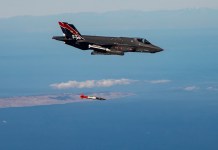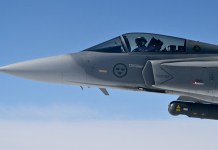Iran’s outreach to Ukraine to clarify allegations over its alleged sale of Shahed-136 drones to Russia in the war has caused a diplomatic flurry.
Russia Bombs Ukraine’s Power Grids With Fresh Wave Of Missile & Drone Attacks; Is Serious Escalation Inevitable?
The UK Military Intelligence update said Russia has likely “exhausted” the “One Way Attack (OWA) aircraft” and can procure more from abroad faster than it can “manufacture new cruise missiles domestically.”
Earlier this month, on November 6, Iranian Foreign Minister Hossein Amirabdollahian admitted that Iran had supplied the drones to Russia but clarified that it was several months before the war.
But the British and Iranian claims have tremendous implications and hints about the magnitude of planning Russia undertook for a possible military intervention, presumably a year in the making.
Drones For Cruise Missiles – Foresight Or Luck?
Assuming that the British theory about Russia exhausting its cruise missile stock and Amirabdollahian’s claim about Iranian drone sales to Russia predating the war is valid, this implies that Russia had foreseen this eventuality by mid-2021 itself.
It had anticipated exhausting its cruise missile stocks if the war stretched towards the end of 2022 and would need something cheaper to fill the gap in its mid-range attack capabilities rapidly.
Whether Russia used the Iranian drones or used the ones it tweaked and manufactured on its own, as some observers believe, is unclear. But the renaming of the drone to Geranium-2 and the discovery of several sophisticated western chips, electronics, circuit boards, and some Ukrainian components indicates the latter is more likely.
Russia would have likely planned the Russian Special Military Operation (SMO) for almost a year if diplomacy with Ukraine, the US, and the North Atlantic Treaty Organization (NATO) failed.
All corresponding and complementing military and diplomatic moves were sequentially planned against possible outcomes in a broad framework within which the military intervention was conducted.
Instead, it has been preparing for this since the 2014 Donbas crisis in Ukraine, when Donetsk and Luhansk declared themselves ‘People’s Republics.’
So far, overall, things have more or less panned out within the framework’s confines. This indicates the sheer scale of elaborate preparations based on realistically anticipated US, NATO, and Ukrainian moves, particularly on the battlefield.
Now, as it has run the Shahed-136 (Geran-2) – which the UK update substantiates by pointing to how there have been no publicly reported strikes since November 17 – it is probably manufacturing new Kalibr and other cruise missiles.

Everything Is Going As Per Plan
Russia presently holds approximately 20% of Ukrainian territory despite the withdrawal from Kharkiv and Kherson. US Chairman, Joint Chiefs of Staff General Mark Milley, has advocated diplomacy and doesn’t believe Ukraine can militarily oust Russia from all its territory.
Right from the beginning of the war with cruise missile strikes; conducting it with a slow, grinding, attritional ground campaign with non-overbearing and overkilling air operations; the feint moves on Kyiv to keep the Armed Forces of Ukraine (AFU) engaged there instead of Donbas; to now trying to end the war with long-range drones (Shahed-136) and loitering munitions (Lancet) had been prepared for.
Russia may not have precisely predicted that it might need to use loitering munitions when its long supply lines feeding its famed gun and tube rocket artillery come under Ukrainian fire. But it had revived its Soviet-era defense industry and made it resilient enough to withstand the Western economic pressure.
Earlier in the war, Western officials were surprised that Russia seemed unmoved and prepared for the devastating sanctions.
Moscow has been de-Dollarizing its economy since 2021, expecting the US and Europe to freeze its $300 billion denominated foreign reserves. Its revenue through energy (oil and gas) sales stood at $337 billion since February 2022, which is 38% more than last year and presently accounts for 40% of state coffers. Inflation has been under 4%.
Russia is now reported to galvanize its industry once again to manufacture cruise missiles possibly. But given its penchant for disinformation and feints, even this might be untrue to let the US underestimate its defense industry and spring some nasty twisted surprise later.
- The author can be reached at satamp@gmail.com
- Follow EurAsian Times on Google News




